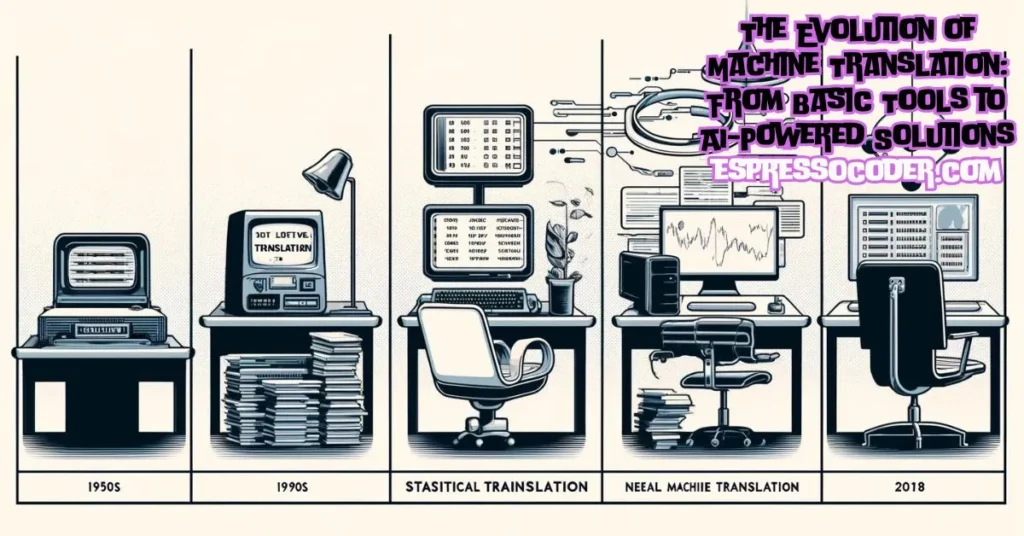In the realm of language and communication, the journey of machine translation (MT) mirrors the broader arc of technological progress. From rudimentary beginnings to the sophisticated AI-driven systems of today, the field has undergone a remarkable evolution, transforming how we bridge linguistic divides.
Contents
The Dawn of Machine Translation
The history of machine translation can be traced back to the mid-20th century, a period marked by a burgeoning interest in computational linguistics. Early experiments, such as the Georgetown-IBM experiment in 1954, showcased the potential of computers to translate Russian sentences into English. However, these initial forays relied heavily on rule-based systems, where translations were governed by a rigid set of linguistic rules. The results were often literal, lacking in nuance and fluency, which highlighted the complex nature of human language.
The Rise of Statistical Machine Translation
As computational power grew and databases expanded, the 1990s witnessed the rise of statistical machine translation (SMT). This approach leveraged vast corpora of bilingual text to infer translations based on statistical models. The idea was simple yet powerful: if a phrase appeared frequently in a parallel corpus, its translation was deemed more likely to be accurate. This shift marked a significant advancement in translation quality, enabling more fluid translations of text.
It was during this era of burgeoning digital resources that services like NAATI document translations began to gain traction, bridging the gap between raw, machine-generated text and the polished, culturally nuanced translations required in professional settings. The advent of the internet further accelerated the development of machine translation, offering an unprecedented wealth of linguistic data and fostering a more connected global community.
The Emergence of Neural Machine Translation
The most transformative shift in machine translation, however, came with the advent of artificial intelligence (AI) and, more specifically, neural machine translation (NMT). NMT models, which first emerged prominently in the mid-2010s, utilise deep learning algorithms to translate text. These systems process and translate sentences as whole entities, rather than dissecting them into parts, allowing for translations that are not only more accurate but also contextually nuanced.
NMT represents a significant leap forward because it can learn from its mistakes, continuously improving through exposure to more data. Its self-learning capabilities mean that translations become more fluid and natural over time, capturing subtleties that earlier systems could not. Furthermore, NMT systems are capable of understanding and translating idiomatic expressions and slang, areas where previous systems struggled.
AI-Powered Solutions and Beyond
Today, AI-powered translation tools have become an integral part of global communication. Platforms like Google Translate, DeepL, and Microsoft Translator harness advanced NMT models to offer real-time, accurate translations across dozens of languages. These tools not only facilitate everyday communication but also play a crucial role in international business, education, and diplomacy.
Moreover, the integration of AI with other technologies, such as speech recognition and synthesis, has led to the development of instant speech-to-speech translation devices. These innovations promise to further diminish language barriers, making seamless, cross-linguistic conversations a reality.
Envisioning the Future
The journey from basic tools to AI-powered solutions in machine translation illustrates the remarkable progress in bridging the gap between languages and cultures. As we look to the future, the potential for further advancements remains boundless, with ongoing research aimed at making machines understand and translate not just words, but the very essence of human communication.
In this dynamic landscape, the evolution of machine translation stands as a testament to human ingenuity and the unending quest for understanding. As AI continues to evolve, the dream of eliminating language barriers entirely grows ever closer, heralding a future where communication knows no boundaries.











